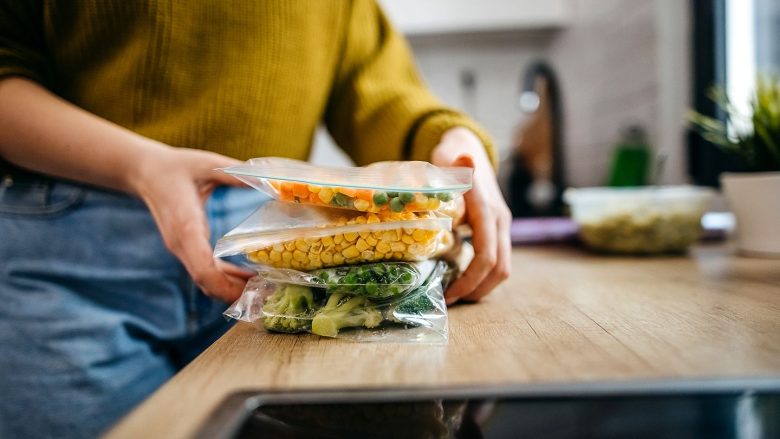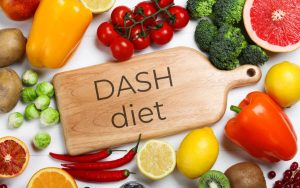Anyone hoping to lose weight or simply gain greater culinary confidence can benefit greatly from meal prep, as it helps them stay on track and resist quick, unhealthy options like fast food or frozen dinners.Meal prep may seem intimidating at first, so the key is to start small and choose familiar recipes as your starting point.
1. Make a Master Ingredient List
Meal planning websites or apps make it easy to make an ingredient list and get organised. Making a list helps remind you what items need to be purchased at the grocery store while marking off items you already possess. Recipe ideas that can be served several times throughout the week tend to be the best choices, as this saves both time and money. Repetitions may not appeal to foodies who enjoy variety, but it can save both.
An effective approach is to concentrate on cooking staples such as whole grains, roasted vegetables, and protein that you can incorporate into multiple recipes—this way you’re creating ingredients with maximum versatility while remaining healthful and sustainable.
2. Plan a Meal Prep Day
Meal prepping requires extensive planning. This involves shopping, preparing, and packaging meals for several days at one sitting on a day that suits your schedule.
Cooking in batches is an efficient way to get more use out of ingredients. For instance, roasting a whole chicken and using it for multiple dinners over multiple nights, or creating large batches of soup or casserole that you can consume as leftovers, will maximise efficiency. Turoff recommends repeating certain meals for ease of preparation, suggesting two to three breakfast and lunch choices per week as a minimum, adding variety with dinners and snacks as needed.
3. Make a Grocery List
Careful preparation and shopping will reduce food waste. Be sure to label and store fresh items such as produce or herbs so you can use them before they spoil.
Establish which ingredients will be made by yourself versus those you will purchase premade. Premade staples like rotisserie chicken, tuna packets, or veggie trays may save prep time so that you can focus on other meals more easily. Furthermore, familiarise yourself with healthy cooking methods and ingredient substitutions.
4. Make a Meal Plan
Once you know which meals will be prepared during the week, create a shopping list indicating exactly which ingredients are needed—this will help reduce food waste by only purchasing items you know will be used right away, according to Simon.
Consider how much time and effort you are prepared to commit to meal prep. Set aside an afternoon during which you have at least three hours available to devote solely to washing, chopping, and cooking your ingredients.
5. Make a Meal Prep Day
Make time each week for meal prep—whether that means making full dishes like this salmon with lemon herb sauce or just gathering ingredients—no matter your method of choice—to minimise meal planning chaos later on.
As part of your prep day, take time to clean and organise the kitchen to save yourself valuable time during the week. Also take this opportunity to do all your grocery shopping so as to not waste food or money by shopping first within your pantry and freezer to use up food that already exists before heading out to the store.
6. Make a Meal Prep Day
Meal prep can be intimidating to someone new to the process, so starting small and gradually increasing to covering all or most meals each week in advance may be best.
Set aside one day a week to dedicate to washing, chopping, and portioning ingredients like fruits, vegetables, proteins, and whole grains—saving yourself time at mealtimes by having these ready for salads, stir-fries, or anything else you may need them for! Be sure to label prepped foods and rotate regularly so as to reduce food waste.
7. Make a Meal Prep Day
Meal prepping has become a widely practiced habit among busy families and professionals, both families with young children and professionals in busy industries. From overnight oatmeal or jarred salads to breakfast burritos frozen overnight or pasta bakes or curries to protein-rich grilled chicken or fish or soups and chillis—meal prepping makes life simpler while helping achieve nutrition goals.
Establish a weekly meal prep habit by setting aside one day a week to plan, shop, and prepare food. For optimal results, organize your prep day based on food categories like proteins, vegetables or whole grains – this may prevent making duplicate meals or storing foods that spoil too quickly.
8. Make a Meal Prep Day
Meal prepping refers to the act of prepping meals ahead of time and storing them away to be eaten throughout the week, often at work or school. Meal prepping can take various forms; roasting a chicken and saving some for later or prepping all your salad ingredients ahead of time are among the many examples of meal prepping.
Meal prep can be an excellent strategy for healthy eating, but it may not suit every person. Eating the same foods multiple days in a row may present difficulties for children or those with food allergies or dietary restrictions.
9. Make a Meal Prep Day
Meal prep involves anything from batch-cooking a few healthy meals on Sunday afternoon to prepping individual ingredients like vegetables and lean proteins for use later. The key to successful meal prepping lies in selecting an approach that meets your schedule, preferences, and dietary needs.
Begin slowly by selecting one mealtime (for instance, breakfasts, healthy lunches, or dinners) and selecting recipes you know can be made ahead. Experiment with meal prep methods that work for you, such as chopping veggies on prep day or freezing prepared meals ahead. Furthermore, consider creating weekly themes so as to add variety and excitement into your menus.




